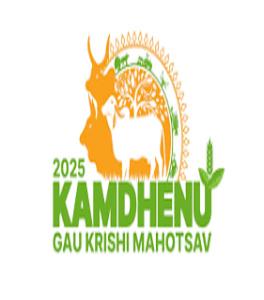The Nutritional Goldmine: Understanding Rathi Cow Milk Fat Percentage

In the world of dairy, where the quality of milk is paramount, the Rathi cow breed from the arid regions of Rajasthan, India, stands out as a remarkable producer. Among its many celebrated qualities.
One specific metric often garners significant attention from nutritionists and dairy enthusiasts alike: the Rathi cow milk fat percentage. This figure isn't just a number; it's a direct indicator of the milk's richness, nutritional value, and culinary superiority.
What is the Rathi Cow?
Before delving into the specifics of its milk, it's essential to understand the source. The Rathi breed is a hardy, drought-resistant cattle breed known for its adaptability to the harsh Thar Desert climate.
These cows are not just survivors; they are excellent milk producers. Historically raised by the Rathi tribe of pastoralists, these animals are revered for their gentle temperament and their ability to yield high-quality milk even under challenging environmental conditions, primarily feeding on natural pasture and crop residues.
The Significance of Milk Fat Percentage
Milk fat is far more than just a source of calories. It is a complex component that carries essential fat-soluble vitamins (A, D, E, and K), contributes to the feeling of satiety, and is crucial for brain development, especially in children.
Furthermore, it is the primary determinant of milk's taste, texture, and creaminess. A higher fat percentage generally translates to richer, more flavorful milk, superior ghee (clarified butter), and thicker, more delicious curd and yogurt.
So, What is the Rathi Cow Milk Fat Percentage?
This is where the Rathi cow truly shines. On average, the Rathi cow milk fat percentage ranges impressively between 5% to 7%. This is substantially higher than the milk from common crossbred or exotic cattle like Holstein-Friesians, which typically average around 3.5% to 4%.
This naturally high fat content is a genetic gift, making Rathi milk a premium product sought after for its unparalleled richness and depth of flavor.
Why is Rathi Milk So Rich?
The exceptional Rathi cow milk fat percentage can be attributed to a combination of genetics and natural rearing practices.
-
Genetic Predisposition: Over centuries of natural and selective breeding in a resource-scarce environment, the Rathi cow has evolved to produce milk that is dense in nutrients and energy. This high fat content was essential for the survival and nourishment of the pastoral communities in the region.
-
Natural Diet: Unlike grain-fed commercial cattle, Rathi cows often graze on a natural diet of hardy desert grasses, shrubs, and agricultural by-products. This diverse, high-fiber diet is believed to contribute positively to the fat composition and overall quality of the milk.
-
Low-Stress Environment: Traditionally raised in free-grazing or semi-intensive systems, these cows experience lower stress levels, which is a known factor in maintaining optimal milk quality and composition.
Benefits Beyond the Fat Percentage
While the high fat content is a headline feature, it's part of a larger nutritional profile. Rathi milk is also known for its higher Solid-Not-Fat (SNF) content, which includes proteins, lactose, minerals, and other vitamins.
This makes it a complete nutritional package. For families, it means needing less milk to achieve the desired richness in tea, coffee, and traditional desserts. For artisans, it means a higher yield of ghee and paneer.
Conclusion
The Rathi cow milk fat percentage is more than a statistic; it is a testament to the breed's superior genetics and natural, ethical rearing practices. In an era where consumers are increasingly seeking out authentic and nutrient-dense foods.
Rathi cow milk offers a connection to a traditional, quality-focused form of dairy farming. Choosing this milk means opting for a product that is not only richer in taste but also packed with the wholesome goodness that modern diets often lack.
- Art
- Causes
- Crafts
- Dance
- Drinks
- Film
- Fitness
- Food
- Games
- Gardening
- Health
- Home
- Literature
- Music
- Networking
- Other
- Party
- Religion
- Shopping
- Sports
- Theater
- Wellness


